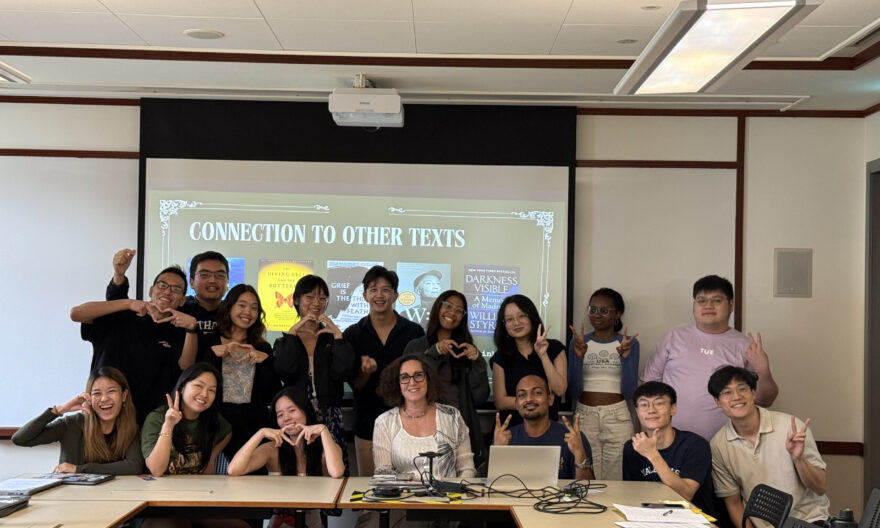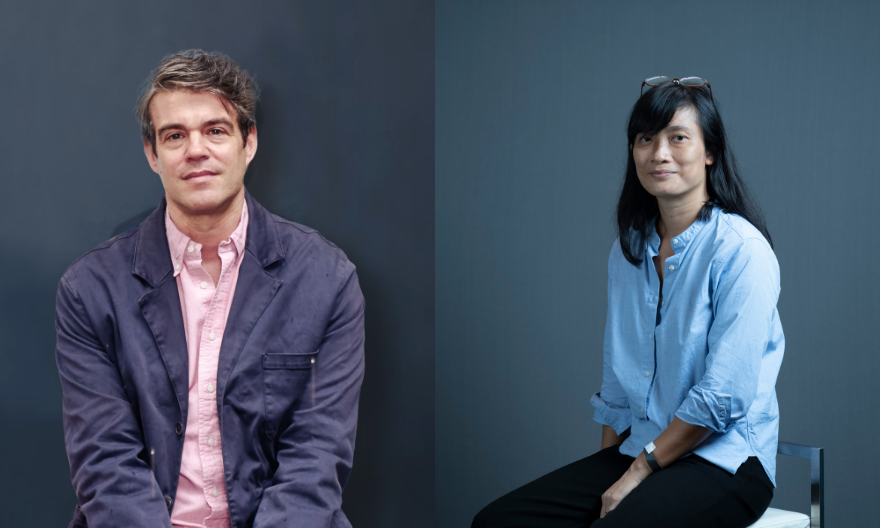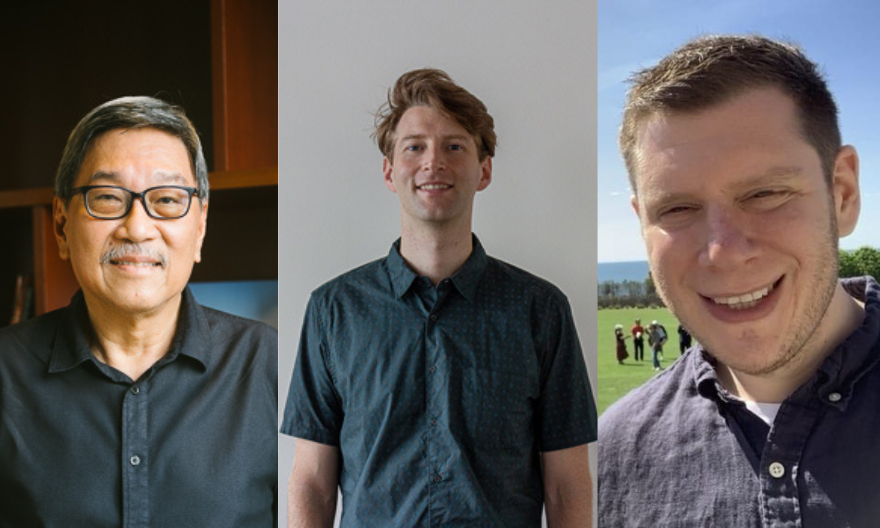Singapore Biodiversity: Past, Present, and Future
Exploring Singapore's natural world through biodiversity, history, and fieldwork
This semester, the Environmental Studies programme at Yale-NUS College is offering an interdisciplinary course that dives deep into the complexities of Singapore’s natural world. Titled Singapore Biodiversity: Past, Present, and Future, this course is taught by Yale-NUS College’s Assistant Professor of Science (Environmental Studies) Eunice Jingmei Tan, a scientist specialising in the ecological interactions of animals and their environments and Assistant Professor of Social Sciences (Environmental Studies) Anthony D. Medrano, who is also a National University of Singapore (NUS) Presidential Young Professor of Environmental Studies. Together, these two professors bring a unique blend of expertise, helming a course that explores Singapore’s biodiversity through scientific, historical, and cultural lenses.
Singapore’s natural environment offers a rich landscape for inquiry, and this course positions itself as both a scientific and cultural exploration. Students gain an understanding of biodiversity research, but are also immersed in Singapore’s environmental history, from the colonial-era to contemporary urban conservation challenges. Asst Prof Medrano, whose expertise is in environmental history, and Asst Prof Tan, an expert in animal ecology with a focus on arthropods, blend their fields to create an interdisciplinary experience for students. By approaching biodiversity through multiple perspectives, students learn to consider not just the biological aspects of ecosystems but also the historical forces and human activities that have shaped them. “This course really taught me to think about the historical context behind the science and discoveries of biodiversity. I’ve learned so much about the biodiversity that exists in Singapore and Southeast Asia, and the people who discovered, researched and wrote about it,” shared Leticia Lee (Class of 2025), a student in the class.
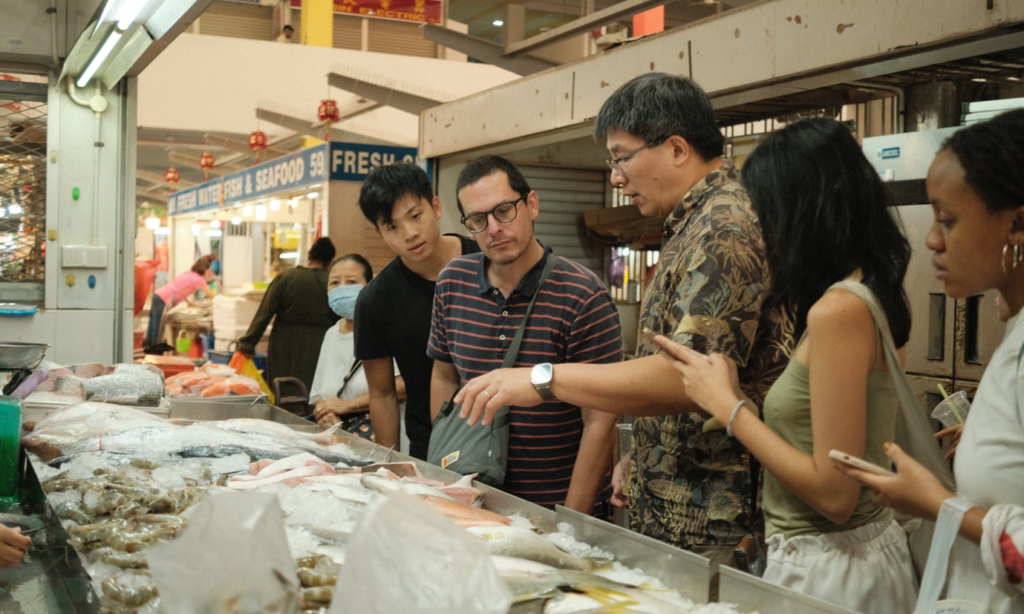 Asst Prof Anthony D. Medrano (left) and guest lecturer Dr Tan Heok Hui (right) share their insights at the Tekka Food Centre Field Trip. Image by Glenda Wee.
Asst Prof Anthony D. Medrano (left) and guest lecturer Dr Tan Heok Hui (right) share their insights at the Tekka Food Centre Field Trip. Image by Glenda Wee.
One of the hallmarks of the course is its unique structure, which integrates hands-on learning through regular field trips. These excursions allow students to see biodiversity in action and interact directly with Singapore’s ecosystems. Each week, the course focuses on a particular theme, from plants and people to coastal ecosystems, and most weeks culminate in a corresponding field visit. For example, a week that centred on the relationship between plants and people ended with a trip to Pulau Ubin, where students explored Singapore’s rich flora and its traditional uses by local communities. A subsequent week focused on coastal ecosystems featured an overnight trip to the Riau Archipelago in Indonesia, where students engaged in first-hand exploration of Southeast Asian mangroves, coral reefs, and fisheries.
One of the course’s more recent sections, which focused on aquatic biodiversity, took students to Tekka Centre Fish Market. Glenda Wee (Class of 2025), another student in the class, recounted the experience as one of her favourites: “During our recent field trip to Tekka Market, we learned about the ecology of fish from Dr Tan Heok Hui of the Lee Kong Chian Natural History Museum. And we also learned about how much fish cost, how they’re typically seasoned and cooked, and the behind-the-scenes process of bringing fish from the Jurong Fishery Port to the market from the fish hawkers. I returned to my suite smelling like fish that day, but the multi-sensorial experience helped ingrain the text-based knowledge we had covered in the classroom.”
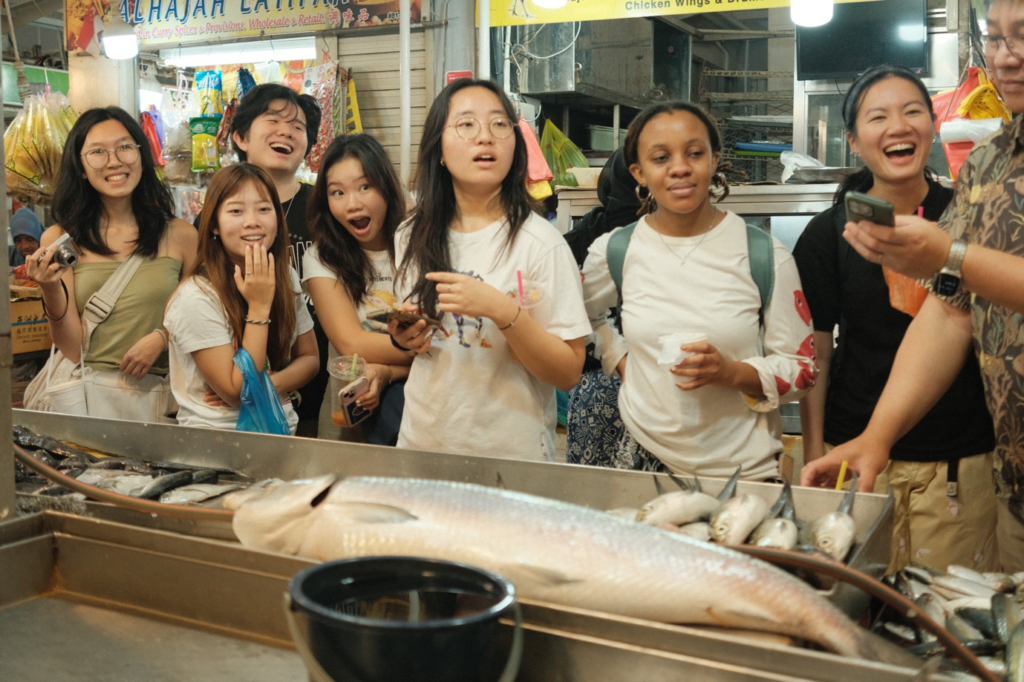 Students at the Tekka Food Centre Field Trip. Image by Glenda Wee.
Students at the Tekka Food Centre Field Trip. Image by Glenda Wee.
The field trips are more than just experiential learning; they serve as a bridge between theory and practice, bringing students face to face with the tangible realities of biodiversity and its interactions with human society. Students are able to grasp the real-world complexities that scientists and policymakers deal with when managing ecosystems in Singapore and Southeast Asia. These experiences deepened Alyssa Tan (Class of 2025)’s interests in urban nature: “My most memorable field trip would be our guided morning visit to the Bishan-Ang Mo Kio Park. We got to learn about how the redesign of the water channel both improved stormwater management and fostered greater biodiversity. What I found interesting was the habitat preferences of native and non-native fish species, and how these species found different places to thrive in the waterways of Singapore. This out-of-classroom experience was integral to my understanding of urban interactions between people and wildlife.”
The course embodies the interdisciplinary approach that Yale-NUS College strives to provide its students, including multiple opportunities to use their skills and knowledge beyond the classroom. Whether students pursue careers in science, public policy, or urban planning, the lessons they learn in this course will equip them to address the environmental challenges of tomorrow with a multidisciplinary toolkit.
Ultimately, Singapore Biodiversity: Past, Present, and Future is a course that reminds students of the value of looking at biodiversity not just through the lens of biology but through a multitude of perspectives, from historical to socio-economic. As Singapore continues to balance the demands of development with the need for environmental stewardship, the ability to think critically across these fields will be essential for the next generation of leaders.

